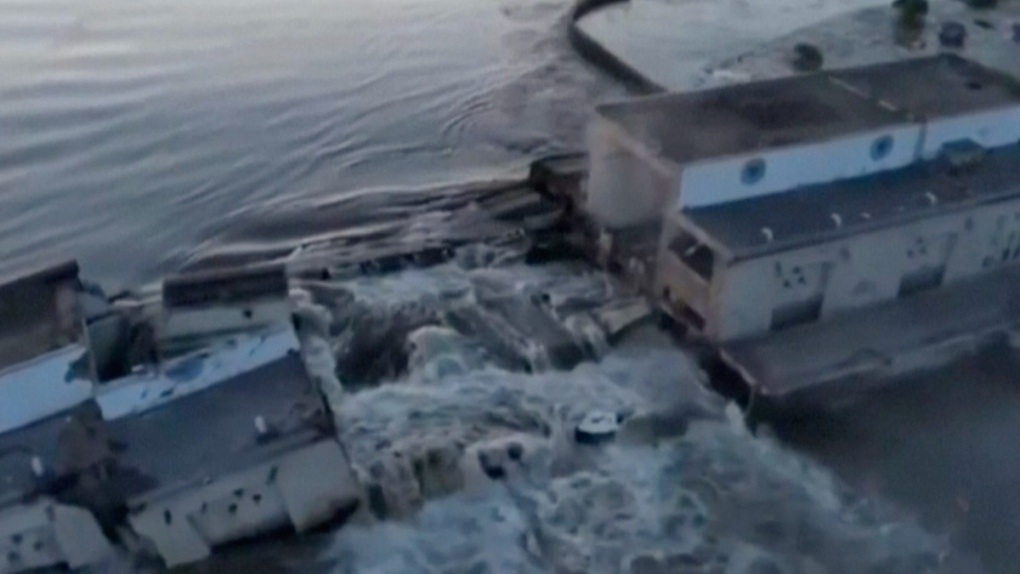(Dan Tri) – The strategic hydroelectric dam collapse in Kherson, which Russia and Ukraine are accusing each other of being the culprit, causes challenges for both Moscow and Kiev in the coming period.
The strategic dam in Kherson was broken, affecting the calculations of both Russia and Ukraine (Photo: CTV).
On June 5, the Nova Kakhovka hydroelectric dam broke, causing the water level in the Dnipro River to increase more than 10 meters in the city of Nova Kakhovka in Kherson province.
The controversy over who caused the dam to collapse has not been resolved, but according to experts, the incident could cause both Russia and Ukraine to face big challenges.
According to ISW (USA), the dam collapse affected both sides.
Former Ukrainian Defense Minister Andriy Zagorodnyuk, who currently serves as an advisor to the above agency, warned that the dam collapse ended Ukraine’s hopes of being able to cross the Dnipro River to counterattack.
According to him, the dam collapse caused severe flooding in the lower Dnipro River area, with hundreds of thousands of people in the area currently being evacuated.
The river is a natural boundary separating the Ukrainian and Russian controlled areas of Kherson: Kiev is on the west bank, while Moscow is on the east bank of the river.

The Dnipro River is the natural boundary between the two areas controlled by Russia and Ukraine (Graphic: Guardian).
This area was once considered a possible location for Ukraine to launch a major counterattack, but with the dam broken, this plan will be difficult to come true.
`Crossing the river to counterattack is impossible. Even attacking the entire area will be much more difficult,` Mr. Zagorodnyuk said.
Ukraine’s adviser accused Russia of being behind the attack, with the goal of making it difficult for Ukraine’s counterattack efforts and preventing Kiev forces from crossing the Dnipro River.
However, according to Newsweek, Russia is also facing challenges because the Nova Kakhovka dam is broken.
The dry Nova Kakhovka reservoir means that the North Crimean Canal, running 400km south and east, could be interrupted in supplying fresh water to the Crimean peninsula, Vladimir Leontyev, the Russian-appointed leader of the Kherson region, has warned.
This canal supplies 85% of Crimea’s fresh water, most of it used for agriculture.
Previously, after Russia annexed Crimea in 2014, Ukraine blocked the canal, causing Crimea to face a serious water shortage.
On the other hand, both the Nova Kakhovka hydroelectric plant and its reservoir and the Zaporizhia nuclear power plant are sensitive energy facilities that Russia controls along the banks of the Dnipro River.
The Zaporizhia nuclear power plant also faces challenges as its cooling system depends on the Kakhovka reservoir – where water levels are falling very quickly.
Director General of the International Atomic Energy Agency, Rafael Grossi, said there was `no immediate risk` to the safety of the Zaporizhia plant, although stressed that `the absence of cooling water during
